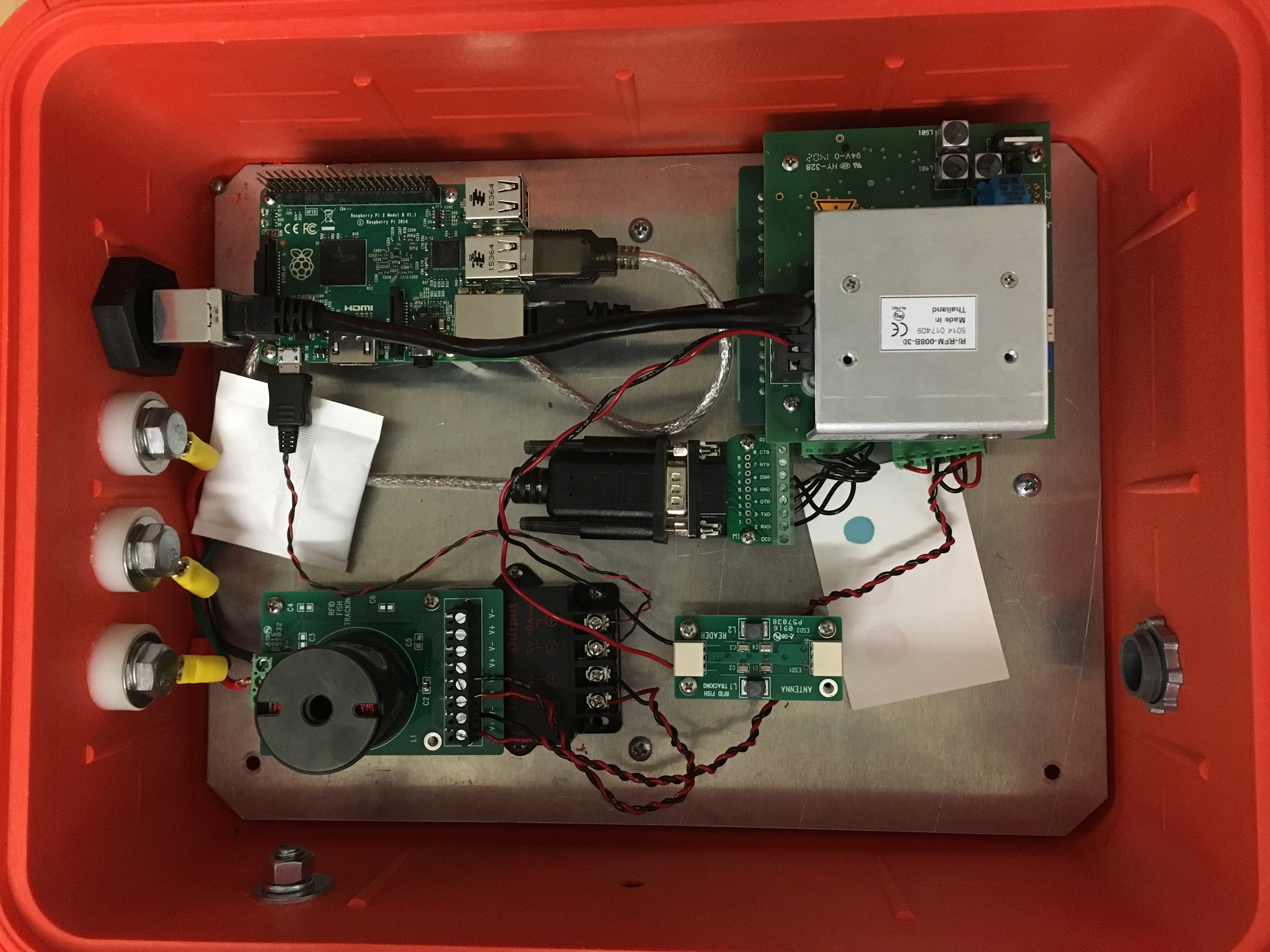2015-16 RFID System
This is the second year of work towards the MSU Fish RFID tracking system from the
ECE Capstone Design class. The previous years' website can be found here.
Over the course of two semesters, the 2014-15 Capstone group was able to successfully
develop and build a functional unit that satisfied all Level One requirements with
each component functioning as designed. At a total price of $1123.31 they had managed
to essentially cut down initial costs to under half of the Oregon RFID readers initial
price tag. Using a Raspberry Pi as a microprocessor, the unit was able to re-use the
Texas Instruments RF Module used in the Oregon RFID unit. Doing so saves the updated
model the cost of purchasing a new unit as well as the capability to retrofit these
older models so that they are not completely scrapped. The group was also able to
produce a functional GUI over a web-based server broadcast from the Raspberry Pi itself.
This type of data transfer would allow access to the files containing the tracking
data over WiFi and an Ethernet connection, while also potentially allowing for Android
smartphones to access the data as well since it is accessed as a website. Designing
a power and surge board increased the overall reliability of the system while in the
field.
However, the team did run into complications. For instance, the surge protectors'
diodes were not strong enough to handle a typical power surge- when the diodes were
exposed to a high current they began to smoke, indicating that they were on the brink
of failure. The power board also had a significant parasitic resistance due to the
use of a large inductor, leading to an unnecessary amount of power being drawn to
the board. Part of our Level One requirements this year is to investigate the cause of these issues and, if within the scope of
the project, create a functional plan to correct the complications, ensuring a safe
and functional prototype.

